How to Quickly Go to a Certain Page, Line, or Section in Word

You can use the Go To feature in Microsoft Word to navigate long documents easily. Go to a page, section, line, or object in a snap.
When you have a lengthy Word document, navigating it can be a challenge. You might include a table of contents for your reader to jump to the section they want. However, for writers and editors, the table of contents isn’t the best way to move around a document.
There’s another option—using the Go To feature in Microsoft Word; you can pop right to the spot you want. You can quickly go to a page, line, or section, but you can also jump to a table, comment, or object.
Here’s what you’ll need to do to use this feature in Microsoft Word.
Open the Go To Tool in Microsoft Word
You can open the Go To tool using the menu or a keyboard shortcut in Word on Windows and Mac.
On Windows, go to the Home tab, click the drop-down arrow next to Find, and select Go To. Alternatively, press Ctrl + G.


On Mac, click Edit > Find > Go To from the menu bar or press Option + Command + G.
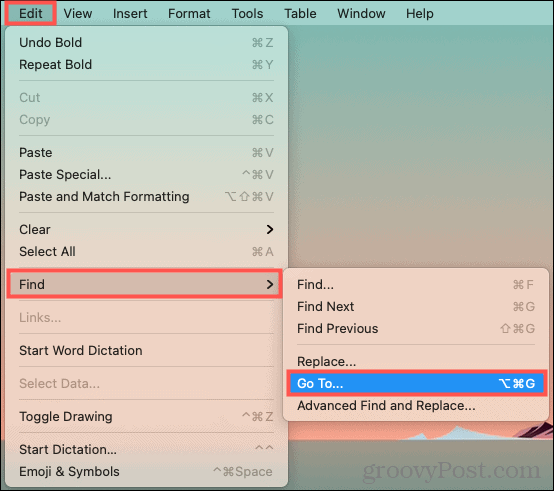
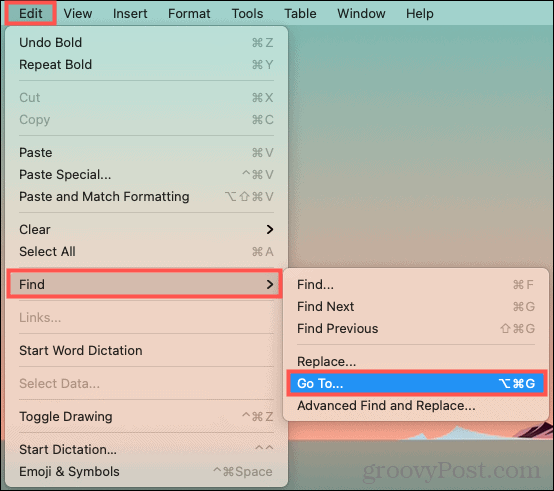
Go to the Next or Previous Item in Word
Once you open the Go To tool, you should be on the Go To tab. If not, select it at the top.
On the left, choose where you’d like to go from the list. You can pick a page, section, line, bookmark, comment, and more.
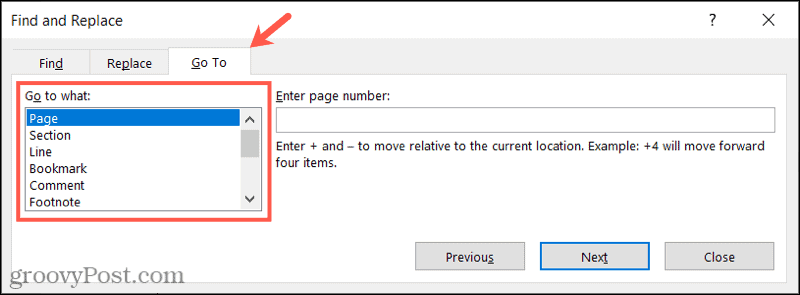
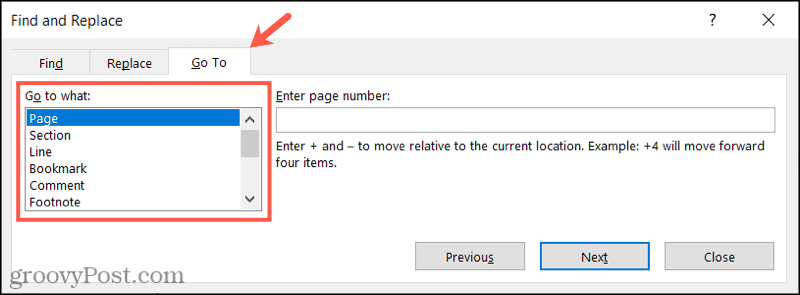
If you want to move to the next item in your document, you can click Next.
For example, if you choose Page and click Next, you’ll go to the following page. If you continue to click Next, you’ll go to each subsequent page with every click.
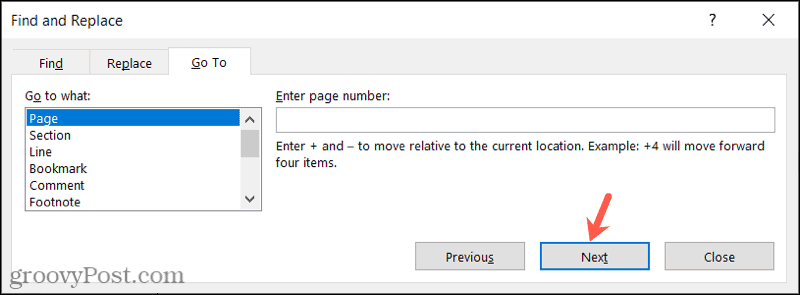
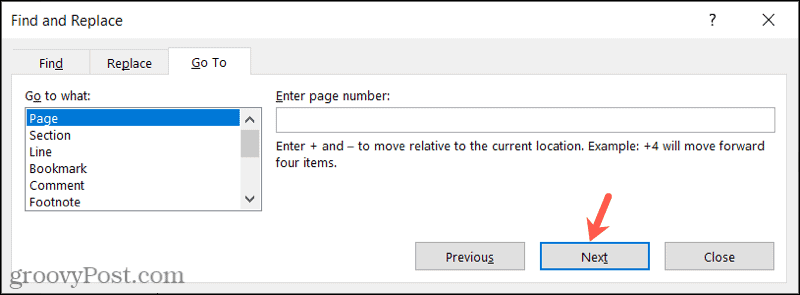
And if you want to go back, click Previous. As with Next, each click of the Previous button takes you back to each item, one by one.
Go to an Item Number or Name
If you want to go to a particular spot in your document, then you can use the box on the right to enter a number or choose a name for the item. Here are a couple of examples.
To jump to a particular page, section, line, footnote or endnote, table, graphic, equation, or heading, enter the number in the box. For instance, you may want to jump to line 25 in your document. So you would select Line from the list, enter “25” in the box, and click Go To.
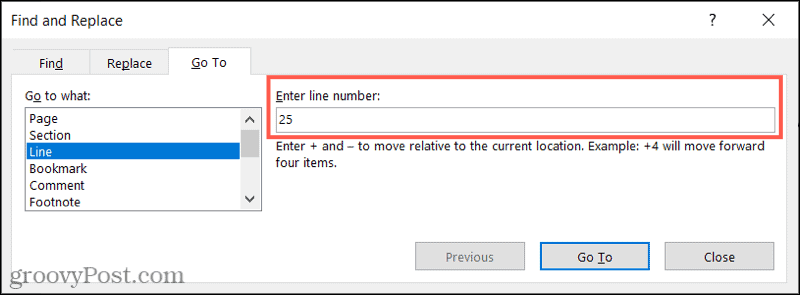
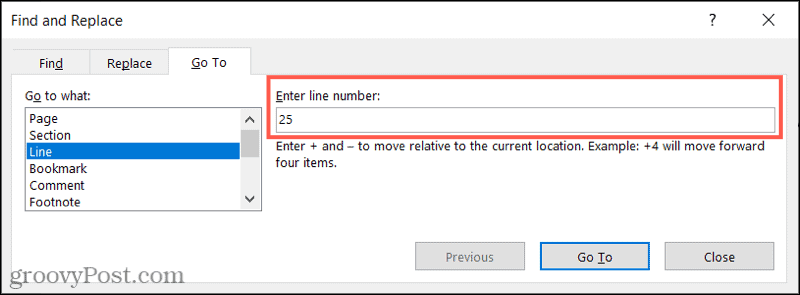
Select a name from the drop-down box for a specific bookmark, comment, field, or object.
For example, if you want to go to a comment you added, choose Comment, select your name in the drop-down box, and click Next.
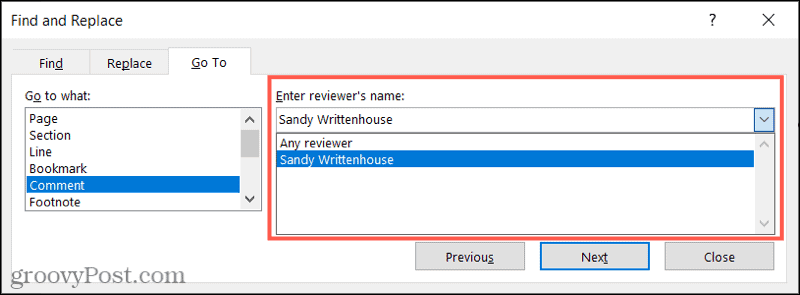
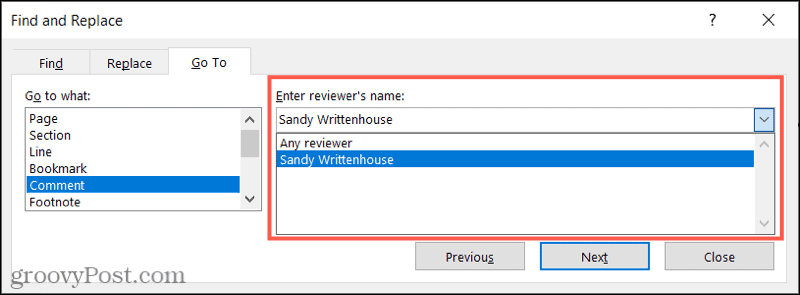
If you want to go to an Excel chart you inserted, select Object, choose Microsoft Excel Chart in the drop-down box and click Next.
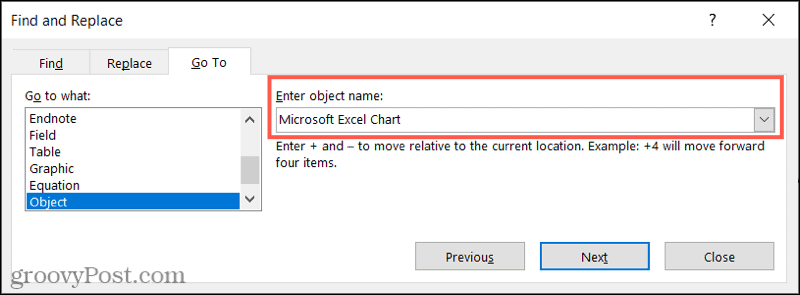
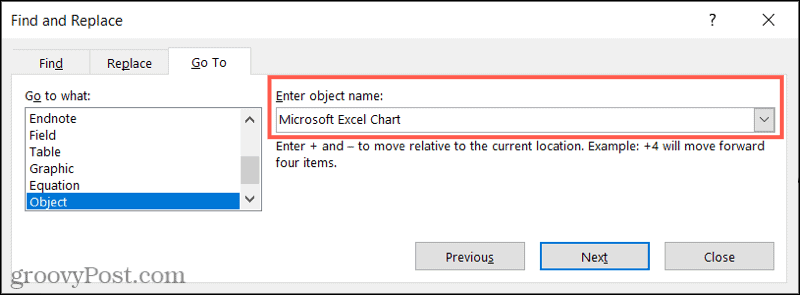
Move Relative to Your Current Spot
Another handy way to use the Go To tool is to jump ahead or behind your current location in the document. Here are a couple of examples.
Maybe you want to jump ten pages forward from the current page. Select Page, enter “+10” in the box, and then click Go To. You will then move ahead by ten pages.
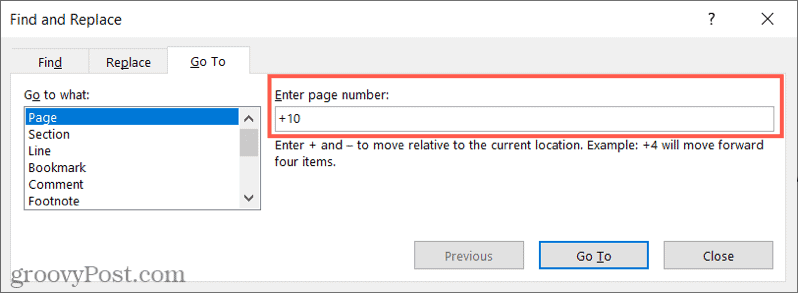
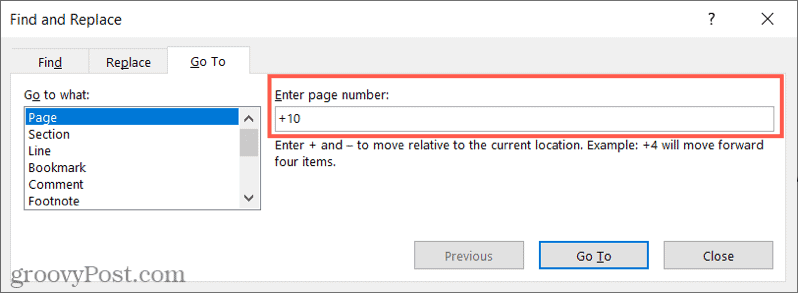
You can also go back from your current spot. Say you want to move back five sections—select section, enter “-5” in the box, and then click Go To to do this.

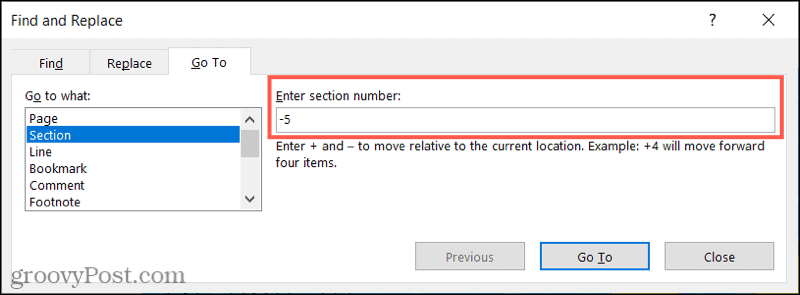
Remember to use a plus sign (+) to go forward and a minus sign (-) to go backward. These symbols only work for those items that allow for a number to be entered in the box, as described earlier.
Navigating is Easy Using Go To in Microsoft Word
If you have a long Word document containing many sections, tables, or lines, the Go To tool allows you to move around quickly. You can use this tool to find specific sections, make changes, or review your work in a non-linear fashion.
For more, take a look at how to find and replace text in Word or how to find and replace formatting in both Word and Excel.
1 Comment
Leave a Reply
Leave a Reply

AB
June 28, 2023 at 10:46 pm
The same half-hearted “tip” one finds everywhere.
The “jump to page” is not global. If you are, for example, in section 40, page 8, which is page 120 of the whole document, and ask to jump to page 3 right in the very beginning because you want to edit the table of content, it will jump to page 3 of section 40, which is page 115. There is, as far as I know, no way to jump to global page counts instead of the section ones.
Oh, but to make the chaos perfect, if your section has 20 pages, but you tell Word to jump to page 40, THEN it WILL use global page counts. Weirdly counterintuitive.